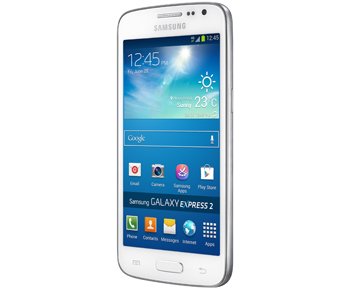Update Galaxy Express 2 SM-G3815 to Android 4.2.2 XXUAMJ1 Firmware
Galaxy Express 2 SM-G3815 should also get what other smartphones get from featuring Android 4.2.2. So why not installing XXUAMJ1 on it, which is official firmware responsible for upgrading your phone to that operating system.
There are so many new features you can experience if your Galaxy Express 2 G3815 runs the Jelly Bean 4.2.2. Here is the complete list of the features you shouldn’t miss out on: new sounds for wireless charging and low battery bug fixes, the possibility to long-press the WiFi and Bluetooth icons in Quick Settings to be able to toggle the on/off state, a new Gallery app delivering superior speed when loading, no more Bluetooth audio streaming bugs, new download notifications and USB debug white-list.
The novelties
The new firmware was launched in October for Vodafone carriers in the UK, Spain, Romania, the Nordic countries, New Zealand, the Netherlands, Germany, the Czech Republic and Belgium/Luxembourg. In November it was launched for these countries (Vodafone being the same carrier): Ireland and France (SFR). This month saw the launch of the XXUAMJ1 in Italy (Vodafone as well).
If you don’t use or own the Samsung SM-G3815, you should follow a different tutorial than this one, since you will brick your handset. Your smartphone must be running a custom ROM if you plan on updating it to the new Jelly Bean OS.
Should you have root access on your handset, you won’t have it once the phone is upgraded; the new firmware is going to revoke it. The important data featured on your smartphone will be salvaged, but the system partition won’t; the internal and external SD cards will also be kept.
Because the KIES logo of this custom firmware isn’t activated, you won’t be able to apply the update on your phone. OTA and our guide are the only ways you can get the new firmware.
Requirements
Our guide should only begin when you’ve completed these requirements:
- Windows should be the operating system your notebook or comp has;
- make several backups (a regular one and a full NANDroid backup);
- flash USB drivers for the smartphone from this page on your comp or notebook;
- your smartphone must have USB Debugging turned on;
- if your device’s battery is running low, charge it fully;
- make sure the security software installed on the laptop and your smartphone are not turned on.
Instructions
- These two packages must be download on the laptop or PC for the first step: Odin tool from this location and the the Jelly Bean 4.2.2 XXUAMJ1 (download the UK version , the Spain version , the Romania version , the Nordic countries version , the New Zealand version , the Netherlands version , the Germany version , the Czech Republic version , the France version , the Belgium/Luxembourg version , the Ireland version and the Italy version ).
- The two packages come with loads of files that should be extracted on the laptop. After they are there, you have to open the Odin as Admin on the notebook and then boot the handset in Download Mode via these instructions: press and hold Home, Volume Down and Power simultaneously and then, when you see a screen with a warning, press Volume Up.
- Next step to follow: connect, with the phone’s USB cord, the device to your laptop and, as soon as a connection has been established, move on to the other steps. The plugging will only have gone well if you see an “Added!!” message and an ID:COM box in yellow. When there’s no successful plugging in sight, try using another USB port or flashing the USB drivers again.
- If things went smoothly with the previous step, you can proceed to this one: tap PDA, select a file with CODE in the name, tap Phone, opt for a file with MODEM in the name, click on CSC, choose a file which has CSC in the name, tap PIT and choose a file with a .pit extension. Coming up next: check Re-partition, F. Reset Time and Auto Reboot, after which make sure to click on “Start“.
- [sc name=”banner-jos”]A couple of minutes later, the new firmware will be installed on your Galaxy Express 2, which will then reboot. Once the screen puts on a message reading “Pass“, you should disconnect the Galaxy Express 2 SM-G3815 from your PC or laptop.
- If there is no connection between the devices, you can explore the goodies that come with the XXUAMJ1 official firmware by opening it from About Phone after you tap Settings.
The NANDroid backup we prompted you to make before should be used in case you want the previous ROM restored on your smartphone. The upgrade process will then be revoked and you will get your old firmware back!
For questions, use the comment field below this post.





